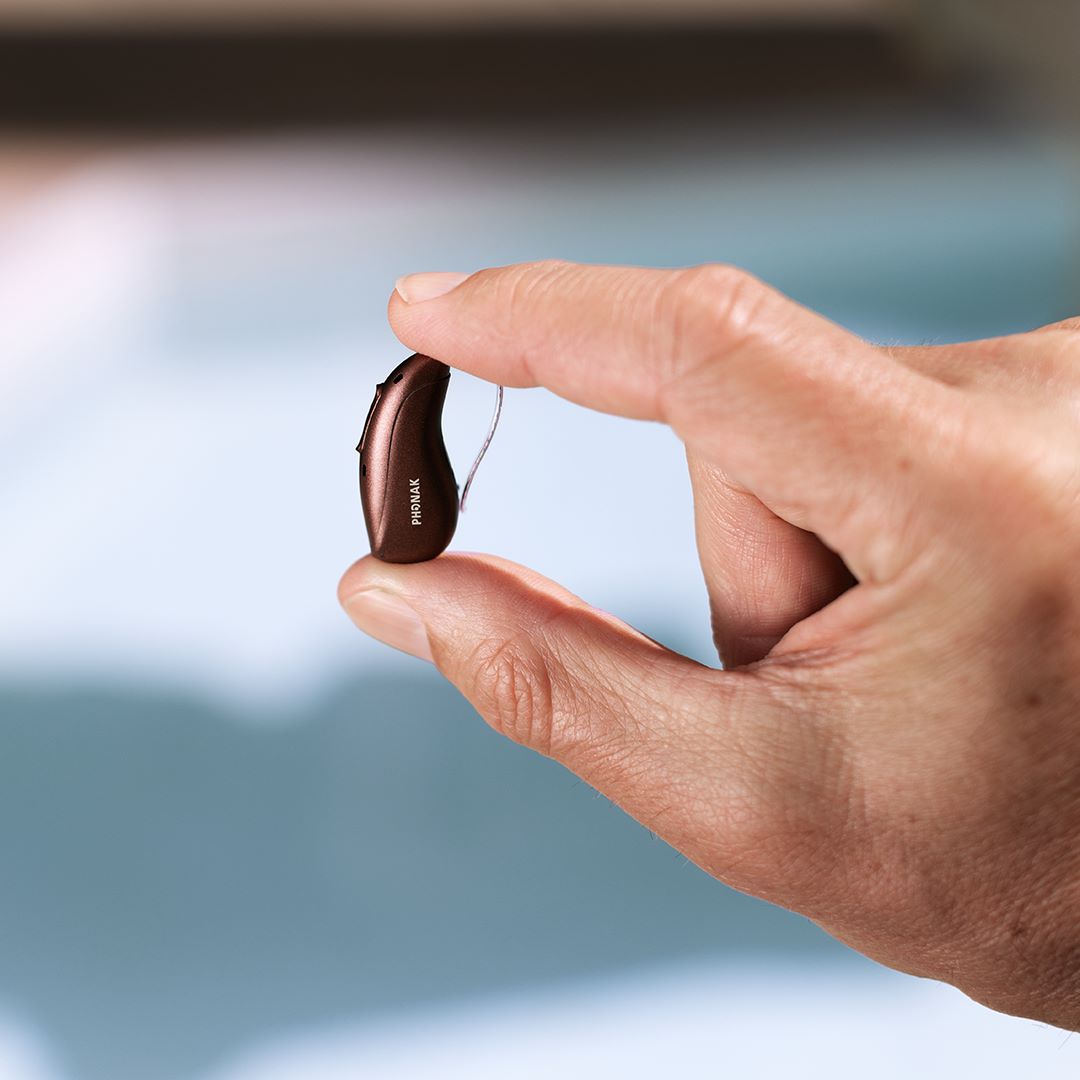
After a few months of fitting Phonak’s new record-breaking Audéo Infinio Sphere hearing aids at Harley Street Hearing, it’s time to give a detailed review of them.
Based on real-world testing and patient feedback, let’s see how well the Audéo Infinio Sphere performs.
Comparing to Phonak Lumity: What’s new?
The Audéo Sphere Infinio looks pretty similar to Phonak’s previous model, the Audéo Lumity, specifically the Lumity Life. You’ll notice the microphones have dual ports for both front- and rear-facing microphones, which allow the hearing aid to detect what’s in front of you versus what’s behind and deliver the most appropriate sound for your individual listening environment, which I’ll cover in great detail throughout this blog.
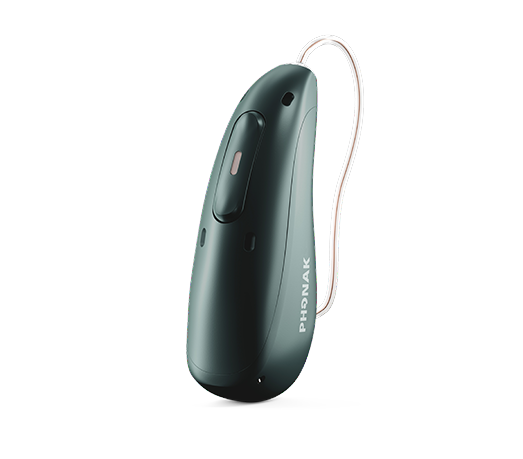
Rocker Switch vs. Push Button Controls
Phonak have stuck to their guns and maintained a rocker switch on the design, and I mention this because some manufacturers have recently moved away from this setup to a single push-button option. In my opinion, this is a mistake because I find that some patients like the flexibility of being able to physically adjust their hearing aids by pressing the button, as well as via their app. The button is a soft key and can be used to turn the hearing aids on and off, adjust the volume or programs, and answer or hang up phone calls.
On top of that, Phonak have also stuck with their tap control feature, which allows you to access Siri or Google Assist or pick up or hang up phone calls, all with a double tap of your ear. Finally, you’ll see the receiver wire here, which feeds energy and information to the speaker that sits inside your ear.
Concerns about hearing aid size addressed
I honestly no longer think that the size of these hearing aids is an issue anymore. My initial concern was that patients wouldn’t like the look or feel of them; however, from the patients that I fitted with this technology, yes, one or two of them have commented on the size, but not one person has refused to wear them, even those of you out there wearing glasses.
More importantly, as I run through exactly what these hearing aids are capable of doing and what Phonak have loaded into them, you’ll appreciate why they’re a little larger than their predecessors, and if I’m 100% honest with you, it’s well worth taking up that extra space behind your ear.
In my opinion, gone are the days when the manufacturers were racing to make the smallest possible hearing aid. Yes, smaller receiver-in-canal hearing aids do exist, but that does come at a cost when it comes to functionality, so the likes of Bluetooth connectivity or for rechargeability and overall functions around clarity and noise reduction capabilities. At the same time, I don’t want to sound dismissive, and if size is incredibly important to you, then you can always opt for the Phonak Audéo Infinio non-Sphere model, which I have also had fantastic results with, but you will have to forgo some of the awesome features that I’m going to be covering today.

Infinio Sphere colour options
There is a wide selection of colours available in the Infinio Sphere. It’s worth noting that there has been way more demand for the Spheres than Phonak had originally anticipated, and as a result, Phonak has not only had to ration the numbers of the units available in each country, but they’ve also limited them to four colours to start with, including champagne, silver grey, graphite grey, and sand beige. I have it on good authority that when Phonak catch up with the demand, they’ll exchange your hearing aid for a preferred colour, which I suspect will be early on in 2025.
Rechargeability
There are two details that you need to know when it comes to the batteries on these hearing aids. Firstly, they’re only available as a rechargeable hearing aid, and secondly, their battery performance.
The Audéo Infinio Spheres are currently only available as a rechargeable hearing aid, and I’ve got to say that this shouldn’t be an issue, as the majority of hearing aid users that I speak to now expect hearing aids to be rechargeable. However, if you’re delaying buying these hearing aids with the hope that one day they’ll be available in a disposable battery version, don’t hold your breath. I am 99% sure that the Audéo Infinio Sphere will never be released in a disposable battery version.
With the computational power within these hearing aids and the energy needed to drive them, a zinc-air battery likely won’t meet its needs. However, the lesser-spec Audéo Infinio may come in a disposable battery version in the future, similar to the Phonak Lumity models.
In terms of battery performance, I’ve found that if the hearing aids are working in their AutoSense setting, adapting to your environment, and you have a balanced lifestyle, you will not have any issues with battery life. The only situation where battery life may be reduced is when the AI-powered Spheric Speech in Loud Noise mode is activated for extended periods, potentially reducing battery life to around 7 hours. Fortunately, Phonak has implemented features to prevent premature battery depletion, such as limiting the AI activation time and providing battery life estimations through the app.
It’s worth noting that I haven’t either heard of or personally had any patients reporting this being an issue, but I still wanted you guys watching this video to be aware of it. Now, fortunately, I am delighted to report that Phonak has implemented a couple of features to stop your hearing aids from prematurely dying. Firstly, your audiologist can limit the time that your hearing aids automatically engage their AI features to around 3 hours a day, which for the majority of hearing aid users shouldn’t hinder their natural and normal listening experiences.
Secondly, if you have a manual program and your hearing aids are set to the Spheric Speech in Loud Noise mode, it displays an estimation on the app telling you how long the hearing aid will last in this mode. Both of these features are unique to Phonak, and I’m pleased to say that they’ve identified a potential issue and implemented ways to prevent it from causing issues with your daily
hearing aid use, hence my not having this be an issue with any of my hearing aid patients.
Phonak’s contact charging system
Phonak have opted to go back to contact charging, as from my understanding they’ve identified industrywide issues with the reliability of inductive chargers when it comes to warmer climates. As a result, you’ll notice two titanium pins on the bottom of these hearing aids that weren’t on their previous Lumity Life model. When the hearing aids are dropped into the charger, you’ll feel them pulled down securely with built-in magnets that ensure an effective connection is made. All I’ll say is make sure that the bottom of this well is free of dust and debris, as it could potentially interfere with proper contact being made and stop the hearing aids from charging properly.
I’m also pleased to share that whilst the charger is powered by a USB-C cable, surprisingly for its size, it also has a built-in battery, with Phonak quoting 3 days’ worth of life; however, I’ve had some patients reporting up to five. When the hearing aids are on charge, the LED lights up in the centre, so you know that they’re charging, and it utilises a traffic light-based system, starting from red when the battery is running low, through to amber, and then green when they’re full. It will take around 3 hours to fully charge these hearing aids, and the LED in the centre of the charger also adopts the same principles to update you about its battery life.
Suitability for different hearing loss levels
Whether you have a mild, moderate, severe, or profound hearing loss, the hearing aids can be adapted to your hearing by switching the power of the receiver between an S, M, P, or UP, or even their ActiveVent technology, as well as changing the receiver.
The way that these hearing aids are coupled to your ears can be personalised too, with a selection of medical-grade silicone domes to choose from or various custom tips such as Phonak SlimTips, seashells, or ActiveVent that I mentioned before.
Now, believe it or not, the tip on the end of your hearing aid is incredibly important, and all too often I see hearing aid users lost in online forums looking for guidance on the most appropriate tip for them. And if that’s you, I feel incredibly sorry for you, as that’s not your job; that’s the job of your audiologist. Now, the wrong tip can completely transform the way that a hearing aid sounds, from how much clarity it provides, how well it copes in background noise, how good it sounds when you’re streaming, and of course the comfort of the thing. And I will always personally try and put custom tips on as many ears as possible when they’re appropriate for that particular individual.

Phonak’s unique ActiveVent Receiver
Phonak’s ActiveVent receiver is compatible with Sphere and the reason that it is so special is because of its built-in moving piston that changes its position depending on your listening environment and diverts either more or less sound naturally down your ear canal or, on the contrary, via your hearing aids.
In turn, this can change how well you hear in noise, how clear your voice sounds, how clearly you hear, and also how music sounds when being streamed from your phone. And if you’re wondering whether or not this matters, it does. Yes, it does. It matters a lot.
There are both positives and negatives to having your ear canals either open or closed, and depending on your hearing loss, sometimes it’s beneficial to have a hearing aid that can do both on different occasions, which, until ActiveVent was released by Phonak, wasn’t possible. For example, in a quiet environment, you might want the vent to be open, allowing natural sound in and out, giving you a nice natural feeling, and connecting you with your environment.
Yet, when in noise, it’s better to have your ears closed, so that all of the sound that you hear is via your hearing aids, having been cleaned of background noise. The same thing goes for music and streaming, so when streaming from your phone, the ActiveVent will close, both blocking sound in and blocking sound out, which enhances music, giving it a greater fullness and richness when being streamed from your phone.
Having also fitted my fair share of Sphere patients with ActiveVent, I can confirm that it does what it says on the tin and boosts its functioning in background noise even further still.
I’ve got to mention, at the same time as this being fantastic, one thing that it’s important that you’re aware of if you’re considering this setup is that when the ActiveVent both engages or disengages (i.e., it opens or closes), you will notice a perceivable clicking sound in your ears. I’ve found that most of my patients don’t mind as long as I’ve warned them beforehand, which I would do with everybody. However, there have been one or two that haven’t been able to get used to it, so we’ve had to switch to standard ear moulds instead.

Technology levels
Audéo Sphere Infinio is available in two different technology levels: firstly, the 90, which is Phonak’s premium technology level, and then the 70, which is their advanced model.
Every hearing aid manufacturer creates the best possible hearing aids that they can with the technology and the research and developments that are available at that moment in time, and brand that as their premium hearing aid, which in this instance is the Infinio Sphere 90.
This hearing aid tends to have the most automation, the most clarity, and the best ability to cope in noisy situations. Phonak then has various technology levels beneath that, with certain features that they’ve stripped away, and you do pay a little bit less for the less-spec hearing aids. But again, it’s down to you and your audiologist to work together and identify which technology level is the most appropriate for you.
Sound Quality: Phonak’s AutoSense OS 6.0
In these new hearing aids, Phonak have developed their AutoSense feature further still, which is one of my favourite adaptive programs out there. It uses sophisticated algorithms to ncontinuously analyse the acoustic environment around you and make real-time adjustments to optimise sound clarity and comfort. And so now they’re on OS 6.0, which Phonak are boasting enhances speech understanding by 16% and reduces listening effort by up to 45%, with the hearing aids automatically categorising your environment into six different listening situations, starting from speech in quiet, speech in noise, speech in loud noise, speech in car, comfort in noise, and music, all without you needing to switch over to manual programs at all.
From my point of view, the great thing about Phonak, over and above any other hearing aid manufacturer, is that as an audiologist I have the ability to manually make adjustments to each of these acoustic scenarios to match my patients’ needs.
Motion sensors
Working alongside its artificial intelligence, Phonak utilises accelerometers, also known as motion sensors, in its hearing aids. This concept isn’t in itself new, with Phonak first introducing motion sensors into their hearing aids way back in 2020.
Motion sensors provide more information to the hearing aids when determining your listening environment, thus anticipating with greater accuracy your specific hearing needs in that situation.
In practice, this means if you’re sat down in a restaurant, you would normally want to hear the person that’s speaking in front of you, and perhaps a little bit to the side too. However, as soon as you stand up and start walking, you would normally want to be able to hear the person by your side as you’re walking along, as it’s unlikely that you would have somebody in front of you walking backwards – and the motion sensors help the hearing aids to recognise this.
Real-Time AI chip for Speech in Noise
Phonak’s Infinio Sphere is the world’s first hearing aid to be powered by a dedicated real-time AI chip for speech-from-noise separation, with the main focus of these hearing aids being a better understanding of speech in background noise. This artificial intelligence sets a new bar in terms of hearing in background noise, and at the heart of this innovation lies their new Deep Sonic chip, which is a proprietary AI sound processing chip working alongside their brand-new ERA chip.
This is a giant leap in hearing aid technology, providing dynamic, real-time adjustments to speech separation from background noise. With 21 times more memory and four times more power efficiency, this leads to 53 times more processing power than any existing industry chip. All in all, from your point of view, this means that this hearing aid is capable of performing 7.7 billion operations per second—and it works.
Phonak boasts that in total there are four and a half million neural connections, trained with over 22 million sound samples, so this Deep Sonic chip achieves an unparalleled improvement in signal-to-noise ratio by up to 10 dB which, in relative terms, is massive and essentially means that you’re three times more likely to understand speech when you’re in noise compared to any other manufacturer’s hearing aids.
In practical terms, every single person—yes, every patient—that I’ve fitted with these hearing aids has reported an improvement in both speech clarity and performance in noisy environments, such as a busy restaurant, for example. And that’s whether they’re new to hearing aids or if I’ve updated them from older tech from either Phonak or any other manufacturer out there too.
Our lab testing
Hearing Tracker have teamed up with HearAdvisor, an independent hearing aid vetting lab who have built a breathtaking audio lab that allows for the independent testing of all hearing aid technology.
Click play on the video below to see how Phonak’s Sphere Infinio holds up to its claims.
Bluetooth connectivity
Phonak are the only manufacturer to use classic Bluetooth, which allows you to connect to any Bluetooth source including your smartphones, tablets, and computers.This integration supports a wide range of audio codecs, ensuring high-quality audio streaming regardless of the source, and also supports dual streaming, allowing you to connect to multiple devices simultaneously,
which isn’t possible from any other manufacturer.
In the Infinio, Phonak have improved the transmission power over their previous models, providing a more stable Bluetooth connection, which firstly ensures consistent audio quality and connectivity over longer distances, and secondly creates a lag-free transition when switching between different audio sources. I haven’t had any complaints with regard to connectivity since I fitted them.
In terms of future-proofing, you will be pleased to hear that the Audéo Sphere Infinio is also Auracast-ready.
Hands-free calling
The Spheres also support hands-free calling, which is pretty limited with other hearing aid manufacturers, meaning that you can keep your phone in your pocket and the microphones on your hearing aids will pick up your voice to send to the person on the other end of the phone. In my opinion, Phonak have carried forward a legacy issue with this hands-free setup, and I have had two people complain about this setup out of everybody that I’ve fitted with this technology.
It’s great to have the ability to have hands-free phone calls, but the downside is that if you answer the phone in a particularly noisy environment, the person on the other end of the call may struggle to hear you. Now, I won’t lie; this is an issue with all manufacturers. However, everybody else allows you to toggle it on and off.
I don’t know if this will change when the LE Audio Auracast features are enabled down the line with a firmware update, so stay tuned and I will report on this as soon as I know any more.
But what I do know is that there is a fix if you’re an Apple user, which is to enable Voice Isolation mode on your phone itself. When enabled, this Voice Isolation feature isolates the microphones on your hearing aid to pick up your voice only and cut out that surrounding background noise, making it better for the person on the other end of the phone to be able to hear you. But I’ve got to say, it’s still not perfect, but you will see an improvement.
MyPhonak app updates
Phonak’s MyPhonak app is one of the most intuitive out there to date and can be as simple or as complicated as you like. If you want to simply use it to adjust the volume, mute your hearing aids, or change the program, then the home screen is perfect for you. However, if you really want to get into the weeds, then you can adjust the graphic equaliser, noise settings, and dynamic range of your hearing aid.
The app itself has only had one new feature in this latest update to version 6.9, which is a Find My Hearing Aid feature. In practice, this means that if your hearing aid falls out or goes missing, the GPS on your smartphone will show you the last time that your phone and your hearing aid were together, so if you’ve lost one, you can retrace your steps and you’ll be able to find it.
Now, there are a couple of things that I’ve come across in clinic that it’s worth mentioning. So firstly, the app itself will ask for your permission to use your location services. You have to allow this, and it must be set to “always allow.” If you don’t take that step, then it won’t work very simply. Secondly, I’ve also been assured that Phonak (or Sonova) doesn’t have access to your location data, so don’t panic; they will not be tracing your every movement. Now, it’s worth mentioning that I’ve had some patients report that it has excessively drained their phone battery having this feature activated, so as a result, they’ve turned the feature off. Interestingly, I’ve only had this with a couple of patients.

No telecoil or CROS compatibility
There is no telecoil and no CROS compatibility with the Phonak Infinio Spheres, and I am a big fan of both. So if you’re interested in the telecoil, then you have to stick with Phonak Lumity family of hearing aids or look to one of their competitors. However, if you’re interested in a CROS system, then you can look to the standard Infinio for those of you out there with single-sided deafness.
In all honesty, the lack of a telecoil shouldn’t be an issue going forward with the introduction of LE Audio and Auracast. However, until we see the global rollout of those transmitters into public venues, and if you’re used to utilising a loop system, then these hearing aids may not be right for you. Saying that, I would still recommend giving these hearing aids a test drive if your main challenge is hearing in background noise, and if you’re used to using a telecoil on your current technology, perhaps you can keep them in reserve for any time that you’d need them.
Durability: Waterproof & sweatproof testing
Phonak have made what was their previous “Life” model their minimum standard when it comes to robustness and water protection, which is only rivalled by Starkey. Now, they’ve done this by adding additional microphone protection, they’ve coated the components with a Parylene coating and then they have brutally tested it in the lab to ensure that it does what they promise, with a total of 135 different tests.
These include a simulated sweat test representing two workouts a week for a 5-year period, a saltwater test, a seawater test, a chlorinated water test simulating two swims per week over a 5-year period as well, and then finally freshwater testing performed in a pressurized container testing down to a depth of 50 cm, 520 times. With the positive track record that the Lumity Life hearing aids have had when it comes to waterproofing, I’m pretty confident that these won’t fail on you with a splash of water. It’s a little too early to know if this extensive testing works, but it certainly did with their Lumity Life hearing aids, and only time will tell if their efforts will pay dividends.
Phonak Accessories: Roger microphones & more
Phonak have been great at recognizing where hearing aid technology alone will struggle to overcome hearing challenges, and as a result, they have a range of accessories such as their
TV Connector and their Roger range, such as the Roger On, Table Mic II, Touchscreen Mic, Roger Select, and their Roger neck loop.
I think you’ll be especially interested in the Roger microphones, which are designed to boost your hearing in loud noise and over a distance. For example, you can place it in the middle of a table at a restaurant with friends or at the opposite end of a conference table in a meeting. You can even clip it to the person speaking at a lecture, worship service, or any other social activity and have their voice streamed directly to both of your ears.
Contact us for Phonak’s Infinio Sphere hearing aids
Interested in trying Phonak’s Audéo Infinio Sphere for yourself? Get in touch with Harley Street Hearing to book a hearing test, and your audiologist will advise if this technology is suitable for you.
We Fitted 500+ Phonak Infinio Sphere Hearing Aids. Review & Patient Feedback Shared… Video
Matthew Allsop is a Partner at Harley Street Hearing, and a content creator for Hearing Tracker, where he shares his honest opinion on all new hearing aid technology. Hearing Tracker is the world’s first truly independent resource for hearing aid customers. You can view his review on Phonak’s Audéo Infinio Sphere below.
Enjoy this article? You might be interested in some of our others:
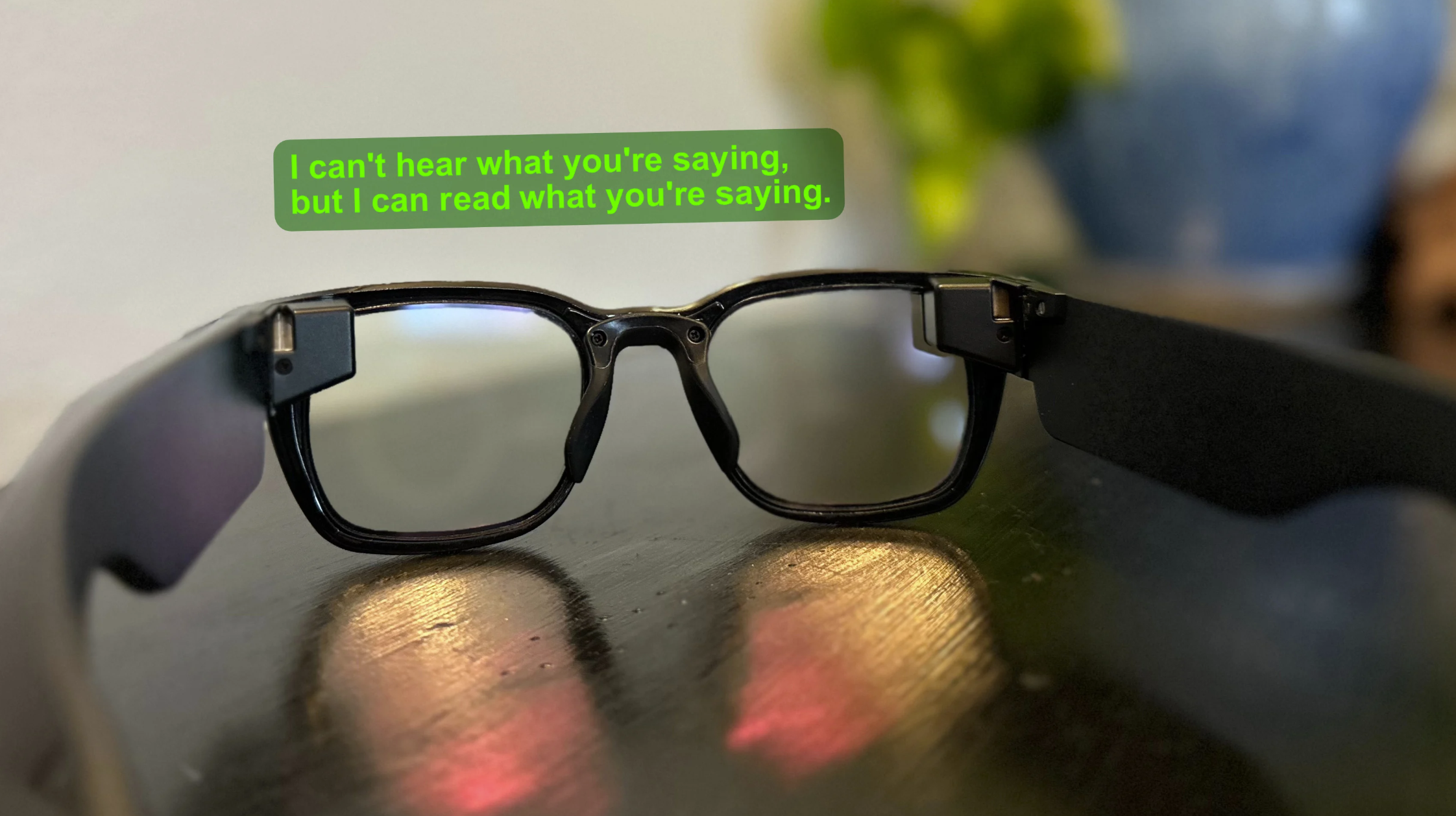











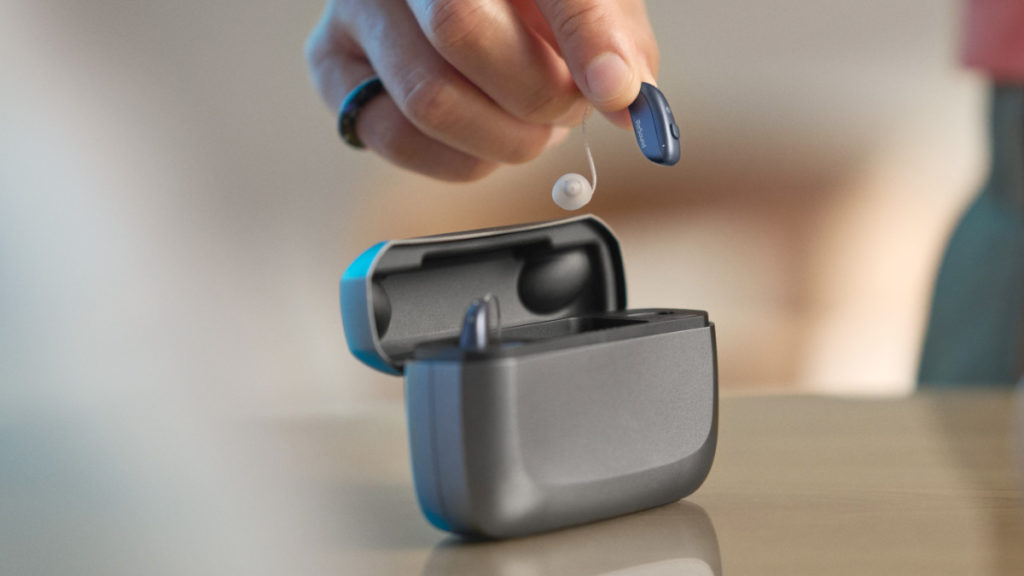

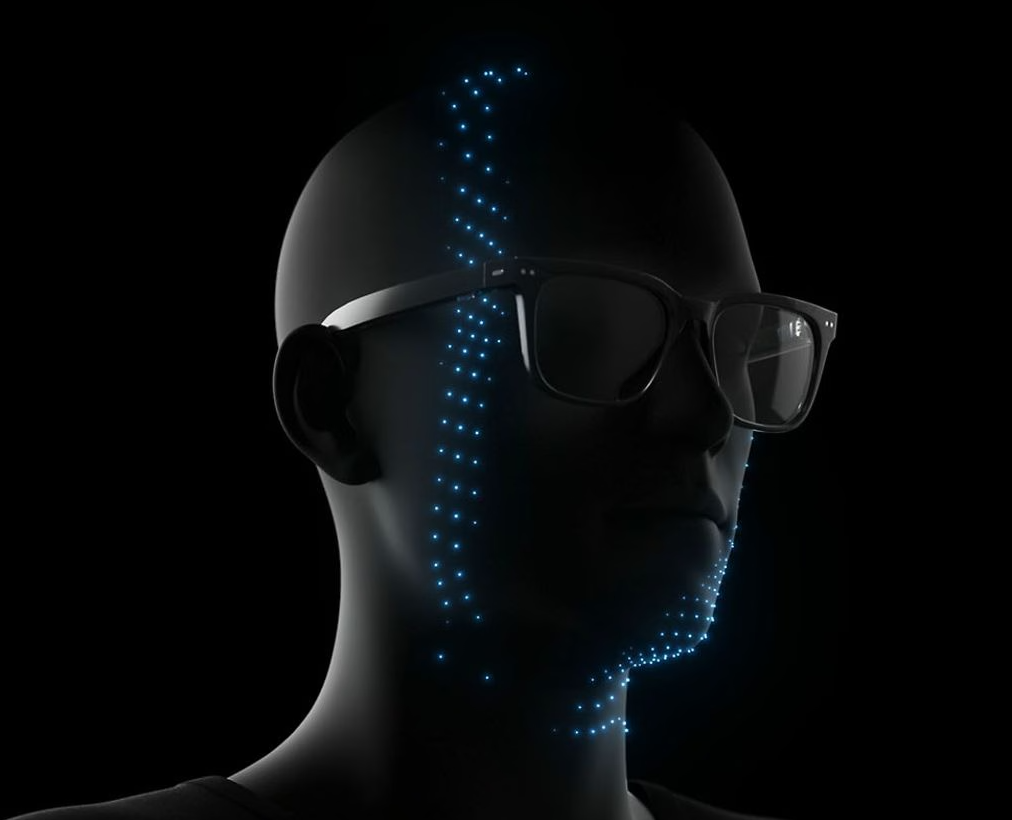
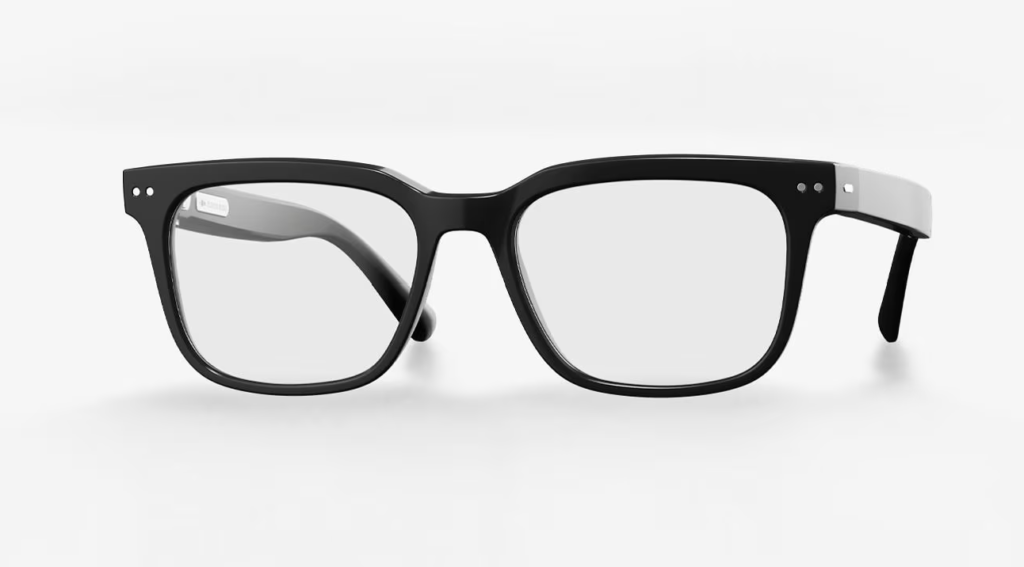

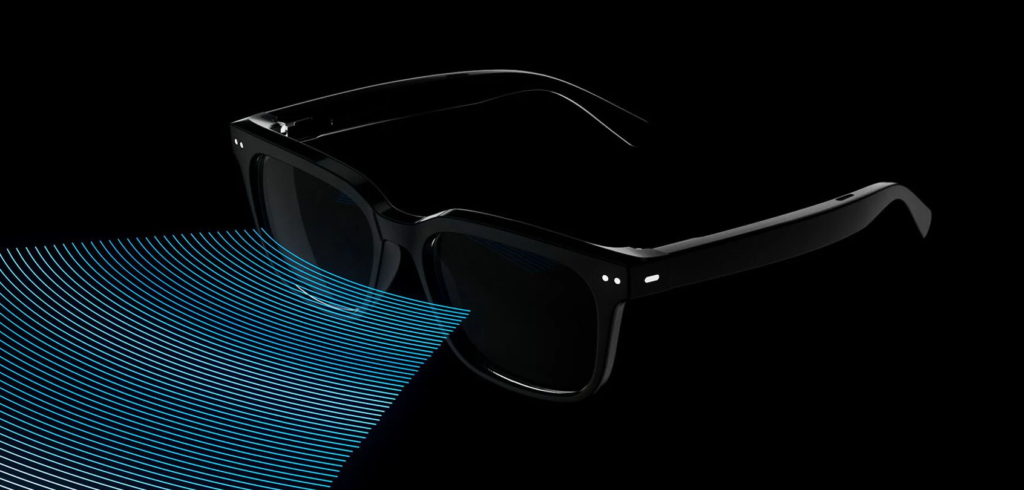







Recent Comments